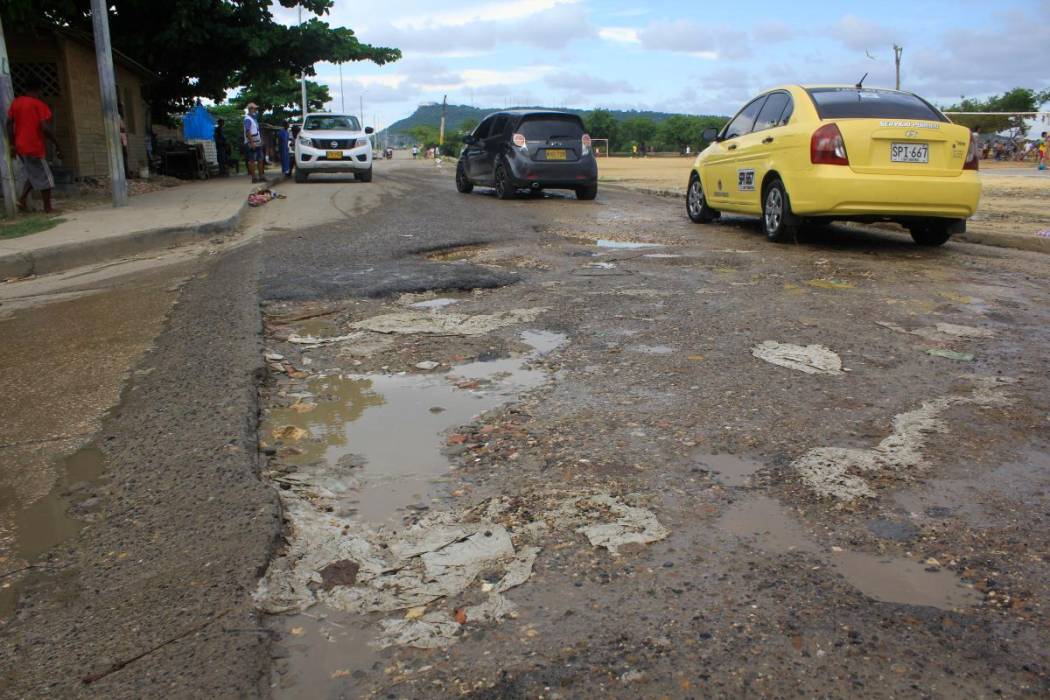RIO DE JANEIRO, BRAZIL – While in Colombia, a 300-kilometer road trip takes about seven hours, in Spain, the same trip would take less than half that time. The latest measurement by the International Monetary Fund (IMF) shows where the fastest and slowest roads in the world are.
The latter are in the poorest countries, such as Colombia, Bolivia, and Ecuador. The fastest are, among others, in the United States, Canada, Australia, and France.
The IMF uses Google Maps to determine the average time between major cities: the countries with the fastest roads can travel between 91 and 110 kilometers per hour; the slowest go between 30 and 60.

The study shows that road quality is associated with travel times. While clarifying that its measurement does not include factors such as road safety and different forms of transport such as rail or congestion during rush hour, slow roads represent an obstacle to the economic development of countries.
Bogota, the capital of Colombia, has no high-speed rail, and its main roads frequently collapse. The situation for the rest of the country is similar. There are no major highways as in developed countries, and the average speed on highways is 57 kilometers.
In 2019, the Inter-American Development Bank warned that the country needed 45,000 more kilometers of roads to increase its productivity. According to 2019 data, it had 206,708 kilometers.
Germán Pardo, president of the Colombian Society of Engineers – an independent and advisory body to the national government – points out that Colombia’s main problems are lack of planning and corruption.
“As long as decisions are political, it will be very difficult to move forward because projects are being planned for three or four years to inaugurate them, and it turns out that infrastructure mega-projects have nothing to do with political deadlines; they should be a state plan, not a plan of the government of the day,” he said.
Pardo says that Colombia’s road development plan has at least ten more years to go and that the country’s fiscal deficit influences the slowness in road infrastructure. Among the recommendations, he has given as a guild to the government are greater control in the designs, better planning, and transparency in the contracting processes.
Corruption in the contracting of roads in Colombia is one of the main factors determining the inefficiency and inadequacy of the country’s roads. One of the most notorious cases is that of Odebrecht, in which the national treasury lost millions of dollars in the failed construction of the Ruta del Sol project, a corridor that would link the country’s center with the northern coast.
The lack of planning in construction works causes road problems in the country, as happened in 2018, with the collapse of the Chirajara bridge, on the road from Bogota to the eastern plains. Before being inaugurated, it collapsed and has not yet been replaced. The tragedy left nine people dead.
One of the guilds most affected by the state of the roads is the heavy freight transport sector. Juan Carlos Bobadilla, secretary of the Colombian Truckers Association, warns that there is higher fuel consumption due to the delays in each route, and drivers must work longer hours, running the risk of accidents, as happens regularly.
“Colombia has a great backlog in the main, secondary, and tertiary roads. There are landslides, which cause delays in the routes. The holes in the roads cause accidents, the tires burst,” he says. Another concern is the presence of armed groups that stop vehicles to assault drivers.
Colombian roads generally do not bypass towns and cities, forcing drivers to drive through them and making traffic more difficult. Although traffic is slower, tolls are among the most expensive in South America. In 2021, the Ministry of Transportation collected over US$1 billion in the more than 160 tolls in the country.
The IMF study specifies that “high-speed roads that can transport goods to customers in distant markets increase productivity, reduce poverty, and contribute significantly to sustainable and inclusive economic development.” For example, the lack of roads in rural areas in Colombia complicates the outflow of many of the crops that farmers grow.
Germán Pardo believes that another cause that influences the state of the roads is the lack of maintenance and upkeep. “It is much cheaper to maintain them than to repair them later,” he says.
Óscar Armando Mejía, professor at the School of Administration of the Universidad del Rosario, agrees. “We should invest in development and preventive maintenance: not just corrective maintenance,” he says.
Mejía believes that lack of planning and corruption are not the only causes of Colombia’s lousy roads: geographic biodiversity and climate change make travel in Colombia complex. The many mountain ranges make infrastructure difficult, he says. Another point he adds is the lack of other types of transportation, such as river and rail.
“Colombia’s worst mistake was losing its railways. We are one of the few countries that do not have them and let them get lost. It is not only about building roads but developing alternative means of transportation,” he says.
With information from El País

